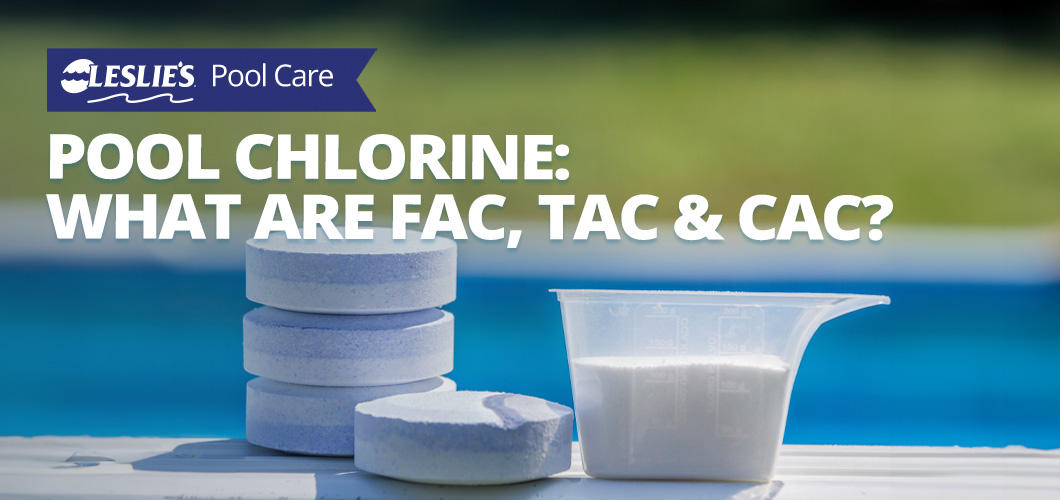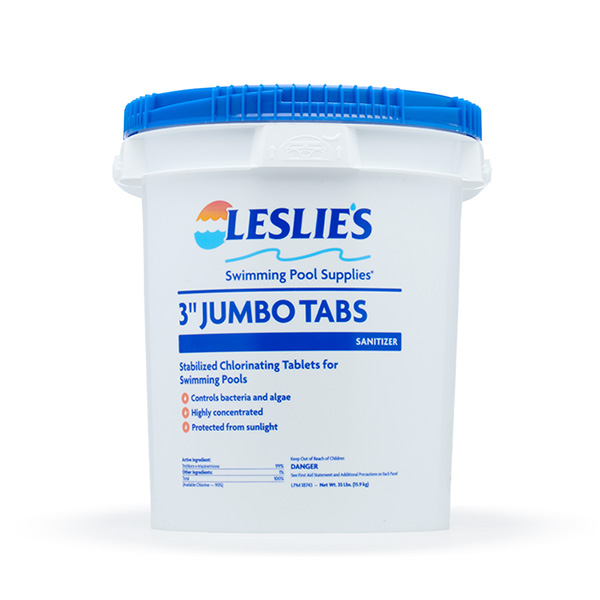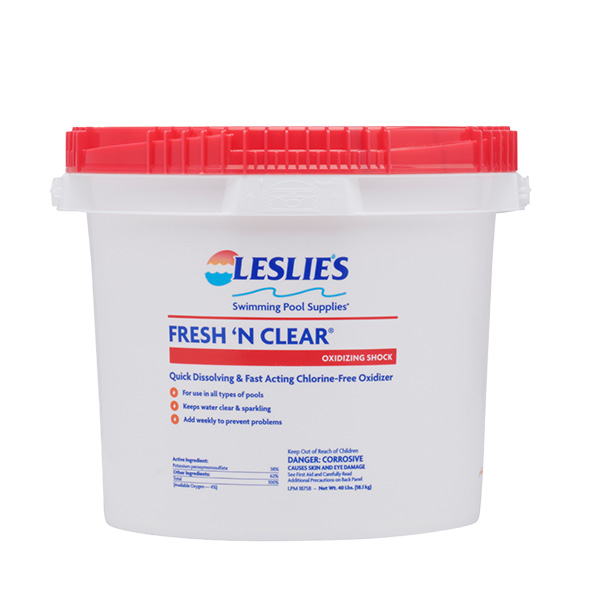
Pool Chlorine: What Are FAC, TAC & CAC?
All pool and spa water have a chlorine demand, and almost everything that enters the water uses up chlorine. The chlorine demand is increased by pH, environment, temperature, and bather contamination. Again, almost everything that enters the water uses up chlorine. The amount of chlorine that remains after the demand is met is known as the chlorine residual. The goal is to always maintain a chlorine residual.
3 Types Of Chlorine: FAC, TAC, and CAC

Free Available Chlorine (FAC)
The actively available disinfectant in the water to sanitize or kill pathogens after the chlorine demand is met. FAC is the type of chlorine we want in the water at all times. It kills the contaminants very quickly. We can measure FAC in ppm with our free Leslie’s In-Store AccuBlue® Water Test, or at home with a DPD test kit.
Total Available Chlorine (TAC)
The total of all chlorine compounds in the water and is the less active available disinfectant in the water.
Combined Available Chlorine (CAC)
An adverse product that forms when free chlorine (FAC) reacts with two possible types of contaminants in the water. These compounds are commonly referred to as chloramines, and are what leave the foul smell of chlorine along with irritation to swimmer’s eyes, skin and mucous membranes. Chlorine in pool or spa water can become “tied up” with contaminants. Things like swimmer’s waste, such as perspiration, urine, fertilizer, dirt, rain, and pollution have a high content of ammonia and organic nitrogen compounds. CAC is a weak sanitizer (40-60 times less effective than FAC) only contaminated chlorine or CAC smells.
How to Remove Chloramines (CAC)
Reach breakpoint which is the level of sanitizer that needs to be added where the chloramines change chemical structure and either gas off into the atmosphere or get filtered out. It is also known as superchlorination which is the practice of adding large quantities of chlorinating chemical to kill algae, microorganisms, eliminate slime, reduce odors, and help maintain a residual sanitizer level in the water.

During the season, with the increase in temperatures and swimmer usage, the need to super chlorinate the pool increases. Think of it this way; super chlorination is really giving chlorine the boost that it needs to bring it back to life. After breakpoint chlorination is reached this means that the nasty smell goes away and all that remains is FAC. Any additional chlorine that is added after reaching breakpoint becomes FAC.
Which chemicals are best at removing chloramines (CAC)?
Strong oxidizers are best for removing chloramines and since they are very unhealthy for swimmers they should be kept at a minimum by regular use of one or more of the below:
- Potassium Monopersulfate (Fresh N’ Clear)
- Ozone
- Ultraviolet Light (UV)
- Enzymes (Perfect Weekly)
How much do we need to increase the sanitizer by?
- TAC - FAC = CAC
- (CAC x 10) = Increase in PPM of sanitizer level
Example: TAC = 4.0 ppm, FAC = 2.0 ppm
- 4.0 ppm - 2.0 ppm = 2.0 ppm CAC
- 2.0 ppm x 10 = 20 ppm (we need to increase our sanitizer level by 20 ppm to remove all CAC)